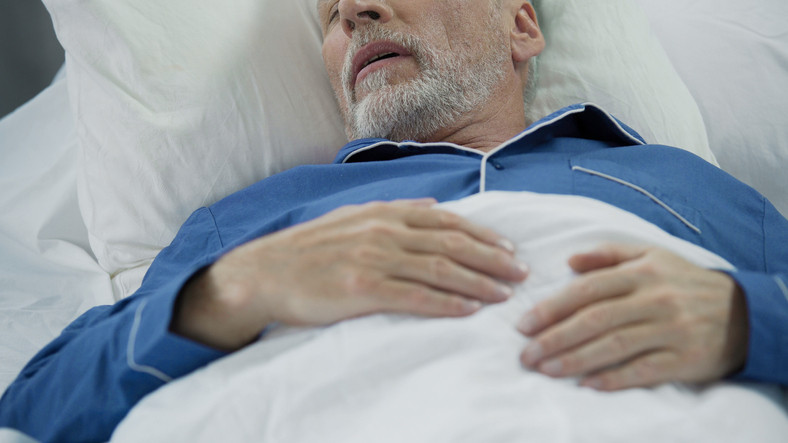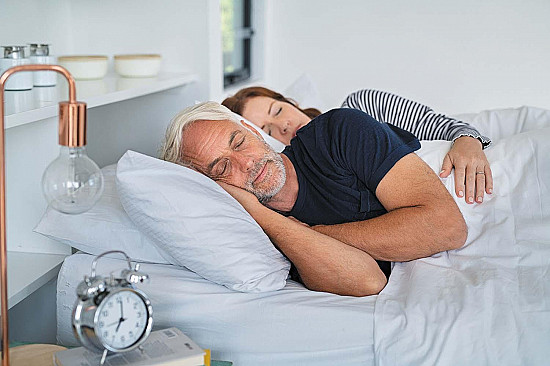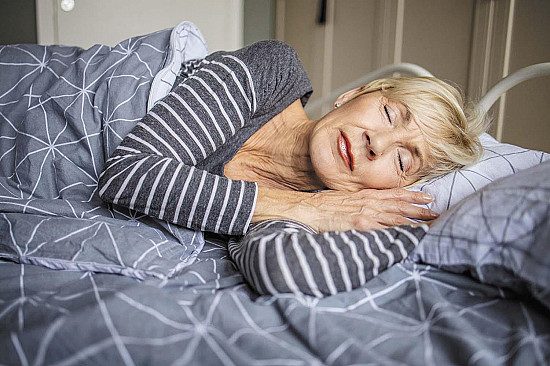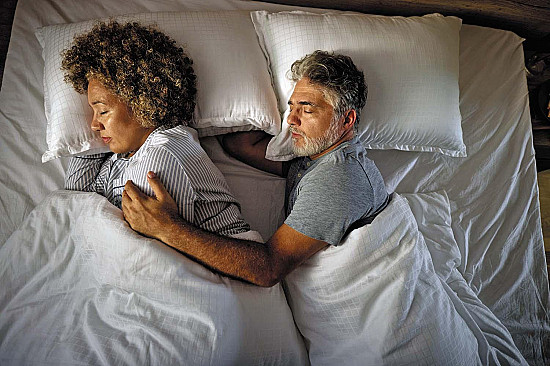
5 timeless habits for better health

What are the symptoms of prostate cancer?

Is your breakfast cereal healthy?

When pain signals an emergency: Symptoms you should never ignore

Does exercise give you energy?

Acupuncture for pain relief: How it works and what to expect

How to avoid jet lag: Tips for staying alert when you travel

Biofeedback therapy: How it works and how it can help relieve pain

Best vitamins and minerals for energy

Should you take probiotics with antibiotics?
Beyond CPAP: Other options for sleep apnea

Sleep apnea is a disorder that affects over 18 million adults in the U.S., according to the National Sleep Foundation. The most common treatment recommended for this condition, which can range from mild to severe, is the CPAP machine. But because it can be bulky, loud, and uncomfortable to wear, most patients don't stick with it.
Depending on numerous factors, though, there are some alternative treatments to CPAP. Some are more convenient, while others are more invasive. But before exploring sleep apnea treatment options, it's important to know the more about the condition itself.
Sleep apnea symptoms and causes
Sleep apnea causes repeated pauses in breathing throughout the night. In the most common form, obstructive sleep apnea, the throat muscles relax, letting the tissue in the back of the throat droop down and obstruct the airway.
In addition to causing daytime sleepiness, sleep apnea is linked to a number of adverse health conditions. These include type 2 diabetes, obesity, and high blood pressure. Getting treatment as soon as possible can help prevent complications like these.
Mild sleep apnea may respond to lifestyle changes, such as:
- Weight loss. Being overweight is one of the biggest risks for sleep apnea. Losing just 10% of body weight can reduce the number of apnea episodes. One way that weight loss results may help people breathe more easily at night is by shrinking tongue fat, researchers have found. Losing enough weight can sometimes cure the condition.
- Quitting smoking. Tobacco smoke can cause the airways to swell, worsening sleep apnea.
- Not drinking alcohol. Drinking before bedtime can cause the muscles in the upper airways to relax, making the tissue droop down into the airway.
- Side sleeping. Back sleeping can worsen snoring and sleep apnea. Sewing a tennis ball into the back of your pajamas or using a wedge-shaped pillow can help keep you on your side.
More severe sleep apnea may require a visit to a primary care doctor or an otolaryngologist (ear-nose-throat, or ENT specialist) for an evaluation and treatment.
CPAP treatment
Short for continuous positive airway pressure, CPAP is a common treatment for moderate-to-severe sleep apnea (although research suggests it may be helpful for people with mild sleep apnea, too). It consists of a mask worn over the mouth and nose during sleep. Some people can use a mask that only covers the nose mask, as long as they are able to keep their mouth closed during sleep.
The mask is attached to a machine that gently blows air into the airways to keep them open. CPAP is an effective treatment, but it can also be clunky. Discomfort is one reason why up to 83% of people who try CPAP don't stick with the treatment.
CPAP uses the same level of pressure when you inhale and exhale. If it doesn't improve the condition enough, there is a variation of this called bilevel positive airway pressure device (BPAP). BPAP pushes air into the lungs with more force on the inhale than on the exhale, to improve airflow.
7 Non-CPAP options to consider
If you have tried lifestyle measures or CPAP for a few months and you are still having problems with sleep apnea, you may want to consider one of these procedures to remove excess tissue so that it no longer blocks your throat:
- Oral appliances are custom-made by your dentist and are designed to either push the lower jaw and tongue forward or keep the tongue in place in order to keep the airway open while you sleep. This option is often preferred by those who qualify because it's more convenient and less costly.
- Uvulopalatopharyngoplasty removes tissue from the upper part of the mouth and the back of the throat. Sometimes, doctors remove large tonsils and adenoids, to create more room for air to flow. Some patients, however, may still need CPAP treatment after the procedure.
- Somnoplasty uses radiofrequency energy to trim excess tissue in the upper airway.
- Hypoglossal nerve stimulation. The hypoglossal nerve controls tongue movement. This relatively new device is placed under the skin of the chest monitors breathing, and stimulates this nerve whenever breathing stops, to move the tongue away from the opening to the airway. The procedure is expensive and may not be covered by insurance.
- Nasal surgery can be performed to correct a deviated septum – an improperly aligned wall between the nasal passages that makes the opening to one air passage smaller than the other.
- Mandibular or maxillary advancement. In cases of severe sleep apnea, this procedure can move the bones of the jaw forward permanently to help keep the airways open.
Image: Motortion/Getty Images
Disclaimer:
As a service to our readers, Harvard Health Publishing provides access to our library of archived content. Please note the date of last review or update on all articles.
No content on this site, regardless of date, should ever be used as a substitute for direct medical advice from your doctor or other qualified clinician.

5 timeless habits for better health

What are the symptoms of prostate cancer?

Is your breakfast cereal healthy?

When pain signals an emergency: Symptoms you should never ignore

Does exercise give you energy?

Acupuncture for pain relief: How it works and what to expect

How to avoid jet lag: Tips for staying alert when you travel

Biofeedback therapy: How it works and how it can help relieve pain

Best vitamins and minerals for energy

Should you take probiotics with antibiotics?
Free Healthbeat Signup
Get the latest in health news delivered to your inbox!
Sign Up




